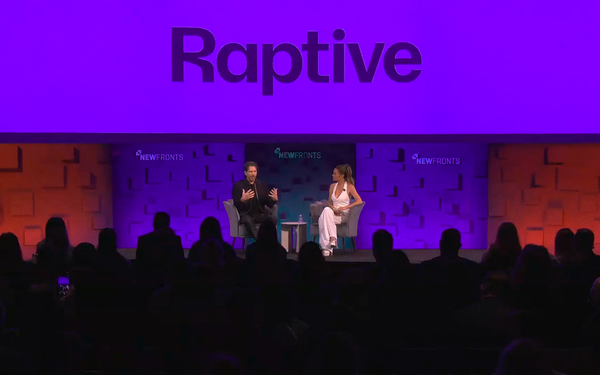
The TV business was designed primarily for advertisers ahead
of viewers, but today, the idea of television -- i.e., video content of all kinds -- as a conduit for connecting brands with consumers has taken hold in a way and at a level never before seen.
This is one of my major takeaways when observing presentations at the IAB NewFronts this week.
As much as anything else, this evolution is surely technology-based,
because so many platforms now exist -- and compete -- for advertising messages and opportunities, from linear TV to social, CTV, OTT, fast channels and more.
All of them are now
equipped in one way or another with the ability to identify specific audience/consumer segments more precisely and more swiftly than ever -- by age, interests, buying habits and more -- and then
attract and engage them with mostly short-form creator and/or branded content in such a way that they are then compelled to share it within their own social micro-communities.
advertisement
advertisement
This kind of
marketing is smartphone-based, and time after time in the presentations this week, video content was displayed, unsurprisingly, on vertical rectangles optimized for a phone screen.
To someone
like yours truly who has spent a career steeped in the pyrotechnics of network upfront presentations, this year’s newfronts were an eye-opener.
Very generally speaking,
content, while worthy of mention, clearly took a backseat to what the content can be set up to do for advertisers.
Buzzwords and phrases heard frequently: “shoppable,”
“targetable pre-roll,” “series integration” and the like.
The new ways in which data is being curated and applied on a new video content front by so
many companies today, some 30 of which presented at the IAB NewFronts Monday through Thursday, was fascinating and -- dare I say? -- thrilling and exciting.
These were companies --
at least some of them -- that, to me, live on the cutting edge of video engagement.
One presentation that I caught was put on by Raptive, a clever name combining the words
“rapt” and “captive.”
The name was coined just last month, representing a rebranding of two co-owned entities, AdThrive and CaféMedia.
To me
eyes (and ears), Raptive occupies a new space in the TV content/advertising universe where the curated content is creator-generated and the creatives share in the advertising revenue.
“We are Raptive and together we are creating the future of media,” said Executive Vice President of Sales Marla Newman, hired last winter from DotDash. “When you invest with us,
75% of your advertising dollars go to [our] creators.”
This company came across as thoroughly modern.
“Our unique business model has been part of our DNA since we
launched, and we remain committed to continuing to support our diverse, passionate and entrepreneurial creators,” boasted Newman, adding, “As advertisers and partners, you have the power
to help us make a difference while supporting your own diversity investment goals.”
Certainly, until Tuesday, when I saw this presentation virtually in my home office, I had never heard
of Raptive.
Nevertheless, here was a company that claimed to “dominate the food vertical” even more than other content brands such as Food Network and Epicurious.
The new worlds that were being described (and promoted and pitched) took me back to when I was first clued in to the whole point of television, which was to create environments for
advertisers and their commercials.
This was when a trade press editor/mentor asked me long ago f I could name the “customer” for network television. Being young and
inexperienced, I answered, “Viewers, of course.”
Wrong, he said. The TV business’s customers are advertisers. Viewers do not give money to the networks (at least,
not then). The advertisers are the people who have the money.
The shows, inasmuch as they are supposed to attract eyes for the customers’ commercials, were for all
intents and purposes, beside the point -- a means to an end.
Today, no matter what the category of ad-supported content, the old concept still holds. Content is a means to an end,
and when all is said and done, creating environments and opportunities for advertisers is still the whole point, just like it’s always been.